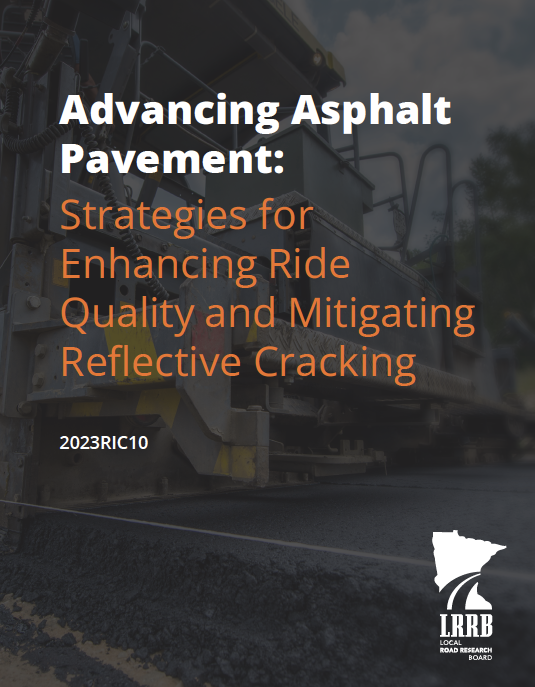Reports of rough roads and cracked asphalt on relatively new repair and construction projects across Minnesota prompted the Minnesota Local Road Research Board to develop a best practices guidebook: Advancing Asphalt Pavement: Strategies for Enhancing Ride Quality and Mitigating Reflective Cracking.

Poor practices when constructing or overlaying an asphalt road can result in problems such as a washboard effect or reflective cracking. The project researchers found—through surveys, literature reviews, and working group meetings—that there is no singular cause or solution to these problems.
Problems with road quality need to be addressed on a case-by-case basis, but the researchers compiled a list of technologies, materials, and techniques that agencies can consider when deciding what to do.
To ensure a smoother asphalt surface when pouring a new road:
- Consider using continuous paving and a material transfer vehicle when laying down new asphalt (pouring asphalt continuously has been shown to reduce bumps and helps with compaction).
- Consider using intelligent compaction technologies (computer assist can achieve a more optimized, consistent pour).
- Establish a solid working relationship with the construction contractors. This includes having a pre-paving meeting with the contractor, including design specifications to establish expectations, and having an inspector on-site.
To prevent reflective cracking when overlaying an existing road:
- Consider using 58-34 asphalt type.
- Instead of using the relatively thin mill-and-overlay method when pouring asphalt, lay down thicker pavement (using the full-depth reclamation strategy or the cold-in place strategy).
- Once a crack is sealed, wait at least a year before pouring an overlay.
- Underseals are still being researched.
Learn more: